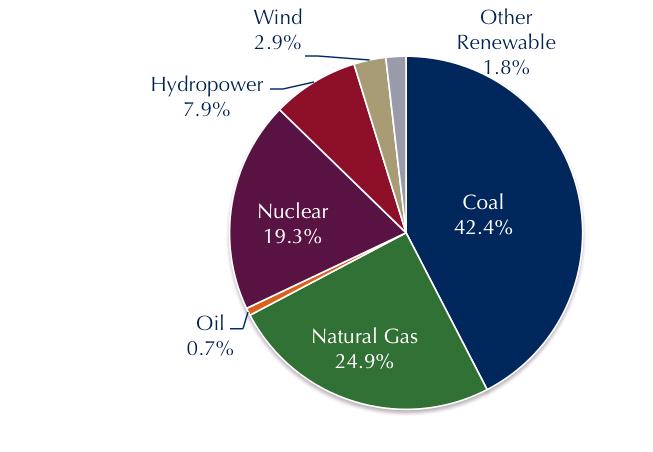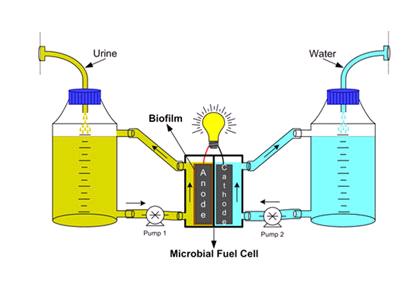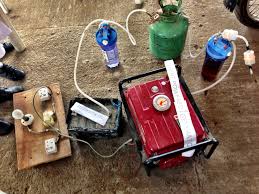Technical Paper Title: Renewable Energy Sources – Power Generation of Electricity By Using Urine Powered Generator
Authors: P.CHAKRAVARTHI & T.RAMESH BABU, 3rd Year B.Tech, ELECTRICAL AND ELECTRONICS ENGINEERING
Guide: M.PADMA LALITHA, HOD OF EEE DEPARTMENT
College: ANNAMACHARYA INSTITUTE OF TECHNOLOGY AND SCIENCES, RAJAMPET
ABSTRACT:
Since urine is produced every where, and a lot of it too humans alone are estimated to produce 6.4 trillion liters a year this idea has a strong local flavor. The ability to produce energy locally could give this technology an edge against other renewable energies such as solar and wind that are only cost-effective in certain areas.
In this topic we generate electricity from urine this nothing but from urine. This is also called as pee powered generator. Here in this topic the main fuel is urine. Generally the urine has majorly water in addition to other chemicals like ammonia, sulphate, uric acid, urea etc. here the urine is passed to the electrolytic cell and from which hydrogen gas is evolved after electrolysis which is main component for generation. Here in urine urea is also a major component after water generally urea is chemical formula is CH4N2O here the four hydrogen molecules is weakly bonded with the other components. Thus this hydrogen gas is passed through various components this purified gas is given to the generator which generates the electricity.
INTRODUCTION:
In all over world the fossil fuels like coal are being exhausted day by day. And due to this we are going for alternate sources like solar power, wind power, nuclear power, and hydroelectric power. All this generations require high capital cost. So because of that there are some many research is going on for low cost energy generation.
Some scientist found a fuel which is called as the fuel of future that is nothing but urine. With the help of urine we can generate electricity in very simple manner as we all consider pee as waste from our body but we don’t know that is going to rule the world in future. Here in the below pie chart we can see how much of electricity is generated from our energy resources.
FIG1. Production of electricity from different sources(Wikipedia)
CHARACTERISTICS AND COMPOSITION OF URINE:
CHARACTERISTICS OF URINE:
- Quantity: The quantity averages 1500 to 2000 ml in an adult man daily. It may vary with the amount of fluid taken. In fact it is linked with the protein metabolism; higher is the protein intake higher will be the urinary output since the urea produced from the protein needs to be flushed out from the body. Higher is the urea production in the body, the higher is the volume of urine to excrete it.
- Color: The color should be clear pale amber without any deposits. However, a light flocculent cloud of mucus may sometimes be seen floating in the normal urine.
- Specific gravity: It varies from 1.010 to 1.025. Specific gravity is determined with urinometer.
- Odor: The odor is aromatic.
- Reaction: The reaction of normal urine is slightly acidic with an average pH of 6.0.
COMPOSITION OF URINE: Urine is mainly composed of water, urea and sodium chloride. I an adult taking about 100 g protein in 24 hours, the composition of urine is likely to be as follows:
- Water: Near about 96%
- Solids: About 4% (urea 2% and other metabolic products 2%. Other metabolic products include: uric acid, creatinine, electrolytes or salts such as sodium chloride, potassium chloride and bicarbonate).
- Urea is one of the end products of protein metabolism. It is prepared from the deaminated amino-acid in the liver and reach the kidneys through blood circulation (The normal blood urea level is 20-40 mg/dl). About 30 gram urea is excreted by the kidneys daily.
- Uric Acid: The normal level of uric acid in blood is 2 to 6 mg/dl and about 1.5 to 2 gram is excreted daily in urine.
- Creatinine: Creatinine is the metabolic waste of creatin in muscle. Purine bodies, oxalates, phosphates, sulphates and urates are the other metabolic products.
- Electrolytes or salts such as sodium chloride and potassium chloride are also excreted in the urine to maintain the normal level in blood. These are the salts which are the part of our daily diet and are always taken in excess and need to be excreted to maintain normal physiological balance.
FIG 2. Chemical composition of urine(google urine components)
COMPONENTS REQUIRED:
The main components required for the generation of electricity is as follows:
1. Electrolytic Cell
2. Water filter
3. Gas cylinder
4. Liquid Borax Cylinder
5. Generator
ELECTROLYTIC CELL:
An electrolytic cell is an electrochemical cell that undergoes a redox reaction when electrical energy is applied. It is most often used to decompose chemical compounds, in a process called electrolysis. When electrical energy is added to the system, the chemical energy in increased. Similarly to a galvanic cell, electrolytic cells usually consists of two half cells. An electrolytic cell ha three component parts: an electrolyte and two electrodes (a cathode and an anode).
In this the raw urine contains urea. The chemical formula of urea is CH4N2O. By this electrolytic cell we can produce the hydrogen gas by applying the electrical energy to the electrolytic cell.
WATER FILTER:
When the hydrogen gas is pushed into the Water filter in the water filter the hydrogen gets purified and thus from this we can get the pure hydrogen gas.
GAS CYLINDER:
This purified hydrogen gas is then passed to the gas cylinder where this hydrogen gas is stored in the form of liquid hydrogen under high pressures at a very low temperature. And this given to the borax gas cylinder.
LIQUID BORAX CYLINDER:
When the hydrogen gas is passed into the liquid borax cylinder, this liquid borax cylinder removes the moisture present in the hydrogen gas thus this hydrogen is given to the generator.
GENERATOR:
Thus the hydrogen pushed out from the liquid borax cylinder is then given to generator. This generator uses the hydrogen gas as the fuel and it produces the electricity.
WORKING PRINCIPLE:
It works on the main principle of Electrolysis.
Urine’s major constituent is urea, which incorporates four hydrogen atoms per molecule – importantly, less tightly bonded than the hydrogen atoms in water molecules. Botte used electrolysis to break the molecule apart, developing an inexpensive new nickel-based electrode to selectively and efficiently oxidise the urea. To break the molecule down, a voltage of 0.37V needs to be applied across the cell – much less than the 1.23V needed to split water.
‘During the electrochemical process the urea gets adsorbed on to the nickel electrode surface, which passes the electrons needed to break up the molecule,’ Botte told Chemistry World. Pure hydrogen is evolved at the cathode, while nitrogen plus a trace of oxygen and hydrogen were collected at the anode. While carbon dioxide is generated during the reaction, none is found in the collected gasses as it reacts with the potassium hydroxide in the solution to form potassium carbonate.
Urea has an enthalpy of formation of -45.9KJ/mol. So it takes +45.9KJ/mol to split it into constitutes elements, including 2H2. This hydrogen can be used to form two moles of H2O: 2 x dH (f) H20 = 2 x -241.8kJ/mol = -483.KJThis net process produces -483.KJ/mol + 45.9KJ/mol = -437.7KJ/mol urea
Each litter of Urine contains about 9.3g of urea, and urea weighs 60.06g/mol. So each liter contains 0.155mol of urea. So a litter can theoretically produce 0.155mol/l * 437.7KJ/mol = -67.8 KJ/L
FIG 3. Fuel cell (Electrolysis process of urine )
- 4. WORKING PROCEDURE:
The working of this generator as shown
FIG 4. Experimental arrangement set of urine(green power from renewable energy sources by using urine)
urine
↓
Electrolytic cell
↓
(Hydrogen gas)
↓
Water filter
↓
Gas cylinder
↓
Cylinder of liquid borax
↓
Generator
↓
Electricity
- Urine is put into an electrolytic cell, which cracks the urea into nitrogen, water, and hydrogen.
- The hydrogen goes into a water filter for purification, which then gets pushed into the gas cylinder.
- The gas cylinder pushes hydrogen into a cylinder of liquid borax, which is used to remove the moisture from the hydrogen gas.
- This purified hydrogen gas is pushed into the generator.
COMPARISION WITH OTHER GENERATORS:
- One litre of urine can produce enough hydrogen gas to run an electrical generator. A gasoline fueled generator needs about seven litres of that fuel to run for the same length of time.
- The installation cost is low for the urine generator when compared with the other generators.
- It is pollution less and it does not produce the harmful gases.
ELECTRICITY GENERATED:
From one liter of urine we can get enough amount of six hours of electricity. That is from one liter of urine we can produce 8.64KW of electricity which is sufficient for house hold purpose.
COMPARISION WITH OTHER COUNTRIES:
In different countries the production of electricity from urine can be obtained in different methods:
Brazil:
In Brazil Afro reggae placed special urinals that convert urine into electricity in crowded areas of the city. The special urinal uses a process similar to that of a hydroelectric plant. The flow of urine is used to generate energy that is then stored in a battery. The energy produced was then used to power Afro reggae’s Carnival truck.
Ricardo John, Chief Creative Officer of JWT, was quoted as saying, “We thought we’d turn a sore subject, which generated much controversy, into something lighter and fun. We will reward with lots of music those who can hold it in a little longer and pee in the right place. It is educational and has a strong built-in social nature.”
And in case you’re thinking this all sounds like a one-off type of idea, consider that the guardian reported last November that British scientists had declared, “pee power is possible.”
England:
Spending a penny could soon provide enough power to send a text message or make a call, after scientists discovered a way of recharging a mobile phone with urine.
Researchers at the Bristol Robotics Laboratory harnessed an electrical charge by passing urine through a stack of microbial cells, which reacted to compounds including chloride, sodium and potassium.
The resultant charge was enough to make a brief call on a Samsung phone, send a text message or browse the web, the Royal Society of Chemistry journal reported.
Dr Ioannis Ieropoulos, from the University of the West of England, said: “It’s an exciting discovery.
“Using the ultimate waste product as a source of power to produce electricity is about as eco as it gets.
“Making a call on a mobile phone takes up the most energy but we will get to the place where we can charge a battery for longer periods.”
The microbial fuel cells convert energy, which turns organic matter directly into electricity, via the metabolism of live micro-organisms.
ADVANTAGES:
- There is no cost of fuel.
- There is no evolution of green house gases.
- It is pollution free equipment.
- Maintenance cost is very low
- It is a ecofriendly product.
- It is non toxic with the nature.
- It generates more electricity when compared to other generators by consuming less amount of fuel.
DIS ADVANTAGES:
- The major disadvantage is hydrogen posses’ explosive risk.
- The installation of this complete equipment is a little bit cost.
- Before generation some external electricity is required for electrolysis process.
APPLICATIONS:
- House hold purpose.
- In the public toilets.
- In the cinema halls, bus-stops and railway stations.
CONCLUSION:
Now a days the power generation from diesel, petrol, coal, water decreases day by day so we need to produce electricity from other type of power plants. When compared with the other generators it is pollution less and it does not effect the environment. It produces much electricity compared with other types of power plants (effectively) and mainly the waste Urea is used ( it is cost less). In present generation this is the best way to produce power from this type of pee powered generator.
ACKINOWLEDGEMENTS:
A group of 14-year-old school girls show off a urine-powered generator at an innovation fair in Lagos, Nigeria.
The generator was unveiled at last week’s Maker Faire in Lagos, Nigeria, by the four teens Duro-Aina Adebola, Akindele Abiola, and Faleke Oluwatoyin, all age 14, and Bello Eniola, 15
REFERENCES:
http://makerfaireafrica.com/2012/11/06/a-urine-powered-generator/
http://motherboard.vice.com/blog/people-are-suspicious-about-this-pee-powered-generator
http://womennewsnetwork.net/2013/08/12/nigeria-girl-engineers-urine-power/
http://www.engadget.com/2012/11/08/urine-powered-generator/
http://www.engineerlive.com/content/23815
http://www.girleffect.org/news/2013/02/girl-power-nigerian-teens-invent-urine-powered-generator/
http://www.inspirationgreen.com/urine-powered-generator.html
http://www.mirror.co.uk/news/weird-news/boffins-discover-way-power-mobile-2057756




